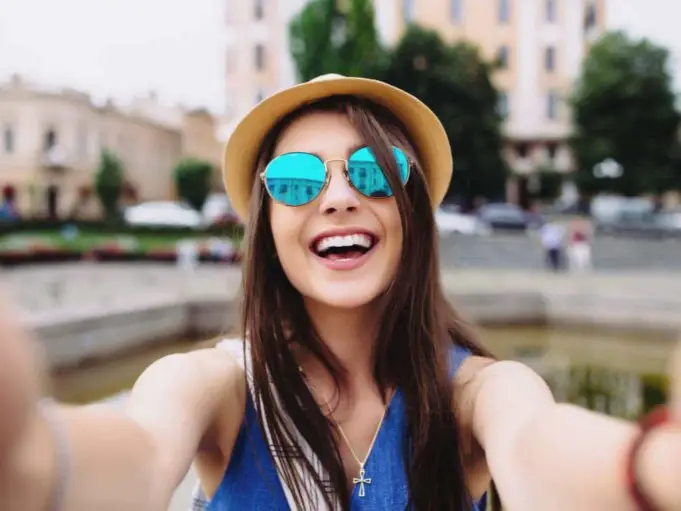Teens today are surfing a complicated new social wave online, and the number of selfies they share could be making it harder. “Just let me take a selfie first.” Almost every parent of a teen has heard these words numerous times.
They’ve also watched what follows – the ‘subway surf’ race to take several photos – and finally, the hour spent in choosing and editing the best pic to share on social media.
For most teens, social media is merely a platform to stay connected and express themselves, and selfies have a massive role in that. But what if that selfie addiction were to point out something darker?
According to a recent study posted in the Journal of Early Adolescence, teens that upload more photos on social media tend to have a higher awareness of their own appearance, and that awareness is associated to a higher risk of negative body image.
According to Nancy S. Molitor, PhD, clinical assistant professor of psychiatry and behavioural sciences at North-western University in Evanston, Illinois, it makes sense.
She believes that these teens are in search of approval regarding their physical appearance, so they may already be exposed to issues of negative self-image long before they start sharing their selfies online.
When it comes to social media, the present generation of teens are surfing a network, unlike anything their precursors had encountered. And it’s beginning at an early age. “It’s alarming, obviously”, Molitor says, ” and there is a lot of research being carried out.
But I think what we’re ultimately going to find is that there aren’t many effects for kids who are only mild users, but for the heavy utilizers of social media, at any age really, I think we’re going to find a lot of vulnerabilities there”. Some researchers have already started pointing out those vulnerabilities.
Picture Imperfect
In 2015, a common-sense Media Report discovered that teen girls are anxious about how they’re regarded online, with 35 percent worrying about being tagged in unappealing photos and 27 percent troubled about their appearance in photos they had shared.
Parents should be aware of the link between body image and selfies as it can be the springboard for other issues.
While some teens with negative body image may just be prone to share photos in search of validation, previous studies have associated negative body image to an increased rate of suicidality, anxiety and depression among teens.
A flood of photos shared on social media could be a sign that a teen is experiencing body image negativity and may need counselling and encouragement.
The Click Factor
In addition to the current list of issues a selfie addiction may pose, Molitor says that she also has other concerns. She believes that these kids tend to model their online lives to look like their favourite characters in TV series and reality shows, failing to realise that they’re not being realistic and are not experiencing the “moment”.
She said that what bothered her most is that these teens will concentrate on how they’re perceived by outside world (How do I look? What do people say about me?) that they lose themselves in the process.
They’ll forget how to develop an authentic natural relationship. She adds “that may be something we ‘ll see play out over the next 5, 10, 15 years. Is it possible that these kids won’t be equipped to build and maintain healthy authentic relationships?
An Individual Experience
A recent study on teens and selfies was conducted by Ilyssa Salomon, a doctoral student at the University of Kentucky.
Speaking about her research, she explained that it is of great importance for parents and clinicians to understand that the use of social media by teens is a very individualised experience because they have the freedom to view and post what they like as well as interpret what they see the way they wish.
She added that her findings were highest for girls and for those who rely on others for approval – the ones willing to modify their behaviours just to fit in.
More kids may fall into the group of willing to modify their character to fit in than parents perceive. And social media have a significant role to play in that.
A 2014 research published in the Journal of Adolescent Health discovered that exposure to images of teens involved in harmful behaviours online such as drinking and smoking crucially increased the rate of teens likely to indulge in the same act.
However, Salomon did offer a spark of hope. “Not every kid will use social in the same way, and even if they do, it will affect some differently than others.”
She pointed out that clinicians and parents should be encouraged by her findings to investigate further and spark a conversation with their teens about the kind of things they share on social media, how it makes them feel, and also educate them on the pros and cons associated with behaviours like posting selfies.
This may especially be true for teens in more susceptible factions. Salomon stressed that there are additional consequences that need to be considered when addressing how these issues affect teens of colour and LGBTQ teens.
How people in their sect are portrayed on social media sets the ideal body standard that these teens will strive for. Western culture tends to value thinness for women and muscularity for men, whiteness and heterosexuality.
She said that the manner in which the media portray LGBTQ individuals and people of colour is extremely sexual, stereotypical and even fetishised. For teens in these factions, the social body standard could be even more unrealistic and limited; this likely evokes the feeling of shame towards their appearance.
Salomon says that it is important to conduct more research to investigate these problems among LGBTQ teens and teens of colour. While some researchers have studied these areas in recent years, a lot of the findings were alarming.
From a 2013 report released by the Gay, Lesbian & Straight Education Network (GLSEN), LGBT youths are vulnerable to almost three times as much harassment and bullying on social media as non-LGBT youths.
Thus, LGBTQ teens are prone to have negative self-esteem and increased risk of depression. But in a win for social media, LGBTQ youths were also discovered to be more exposed to health information, peer support and avenues to be civically engaged online.
Selfie Control
Salomon notes that due to physical changes that occur in the body of teens undergoing puberty, some alterations in their body image is natural and should be expected. She also points out that the enemy isn’t social media and the duty of parents should be to assist their teens to utilise social media in positive ways.
She stressed that when teens navigate social media, they learn what our culture values about their appearance whether they mean to or not, so if parents want to be actively involved in moulding these values, then they need to initiate conversations with their teens about body image and the effects of social media on it.
Molitor also warns parents to be aware of their own interactions online and the kind of example they’re showing their teens.
If they’re concerned about their son or daughter, they should first of all look at themselves, how often they take pictures, how often they are using their phones and what impact their social media use can have on their teen.
She encourages parents to set examples for their teens by practising selfie control and actively involving in their teens’ offline lives.
“Show an interest in your child’s authenticity, their personality and strengths,” Molitor says.
“If parents can start making a genuine effort to connect more outside their screens, they can hopefully teach their kids to place less value on the interactions happening behind their screens as well”.













